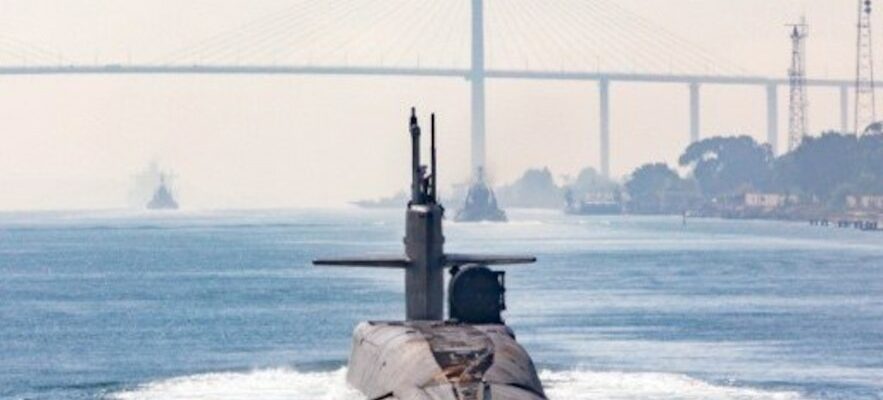The end of the Cold War had removed from the minds of Europeans the risk of apocalypse posed by nuclear weapons, which had long been part of their daily lives. The threats made by Vladimir Putin with the invasion of Ukraine have reintroduced it abruptly. This is not the only symptom of a shift into a new era. The Russian-American bipolarity is being challenged by China, whose arsenal continues to grow in opacity. New “endowed” powers are emerging: North Korea, already; Iran if it decides, and other states, tomorrow, if they see it as the only way to ensure their survival. In 1964, the director Stanley Kubrick titled his satirical film Dr. Strangelove: How I Learned to Stop Worrying and Love the BombThis “mad love” has taken over the world and complicates the game of powers.
EPISODE 1 – Nuclear weapons, the bidding war: how Ukraine had to give up its bomb
EPISODE 2 – Putin and the nuclear bomb: the risk of apocalypse
EPISODE 3 – China and its colossal nuclear arsenal: the inside story of Beijing’s mysterious expansion
On July 18, 2023, a fog envelops the port of Busan in South Korea. Offshore, a monster 170 meters long and nearly 17,000 tons emerges and approaches slowly. It is greeted by small tugboats that help it, in a downpour, to moor. TheUSS Kentucky is one of the most lethal weapons the United States possesses. Like the 13 other Ohio-class nuclear-powered ballistic missile submarines (SSBNs), it has 20 continental missiles in its bowels. Its Trident rockets can carry several nuclear warheads of 100 kilotons (the W76-1) or 455 kilotons (the W88, more than 20 times the power of the Fat Man dropped on Nagasaki).
The event was closely followed by chancelleries around the world. It had been nearly four decades since Washington had allowed one of its SSBNs to stop over at its South Korean ally. But there was an urgent need to reassure it, because North Korea has several dozen atomic bombs and is multiplying its ballistic missile tests. This strategic signal is also addressed to Moscow, Beijing and others: the American authorities are more engaged than ever with their closest allies.
The stopover in Busan was the eighth of an SSBN outside a home port since 2015 – there had been none in the previous fifteen years. It is part of an unprecedented sequence of reaffirmation of American nuclear power. Contested as never before since the Cold War, the United States has embarked on a titanic modernization program of its nuclear triad. 1,500 billion dollars must allow to replace all the Ohio submarines, forty years old, with new generation SSBNs and all the old Minuteman stationed in silos scattered in Wyoming, Montana and North Dakota with Sentinel missiles. And, also, to add to its air fleet bombers with unequaled stealth, the B-21s (700 million dollars each).
Difficult debates ahead
This triad is intended to transport the 1,770 nuclear warheads deployed by the United States in 2024, according to the Stockholm International Peace Research Institute (SIPRI), compared to 1,710 for Russia. But is this enough to deter not one, but two main adversaries? No. Washington could be forced “to expand its nuclear arsenal” if Russia and China, which is aiming for parity with the other two by 2035, do not change their trajectory, warned one of Joe Biden’s advisers on these issues, Pranay Vaddi. This arms race could occur when the New START treaty, the last major restriction on the world’s nuclear warhead stockpile, expires in February 2026. It planned to limit the number of warheads deployed by the United States to 1,550 – and the same for Russia.
Undated photo released by U.S. Central Command, Nov. 5, 2023, showing a U.S. Ohio-class nuclear-powered submarine
© / afp.com/HANDOUT
In some strategic circles, there is already talk of expanding the U.S. nuclear arsenal. “Planners who target want to have enough weapons to respond to all the weapons on the other side of the fence, on the adversary side,” says Ankit Panda, a research fellow at the Carnegie Endowment for International Peace in Washington. That one nuclear strike could come in response to another, and so on. Intermediate solutions are also being considered: “To deter the Chinese, in addition to the Russians, the response could be more qualitative,” suggests Rose Gottemoeller, a New Start negotiator for the Obama administration. “We have 3,700 warheads in reserve, it will be possible to increase the number of warheads in missiles without increasing the overall stockpile.”
To avoid an arms race, strategic tasks, such as destroying silos, could be entrusted to conventional weapons. “We no longer really live in a world where only nuclear weapons can threaten other nuclear weapons, as in the Cold War,” says Ankit Panda. “This will lead us to very difficult debates about the right balance between conventional and nuclear capabilities.”
“The nuclear world could change very quickly”
The dilemma could be dizzying if Russia and China, in line with their “limitless friendship” expressed in 2022, opted for a coordination of their nuclear policies. “A coalition between Beijing and Moscow would place the United States in a position of inferiority, the nuclear world could change very quickly”, worries a high-ranking officer who spent part of his career within the French nuclear forces.
“After the Cold War, we cut programs and reduced the number of nuclear weapons,” recalls Hans Kristensen, director of the Federation of American Scientists, an independent organization that is a reference on proliferation. “That trend has gone away,” he laments. “There are more and more countries that insist on the long-term importance of these weapons.” Faced with the North Korean threat, South Korea is increasingly considering acquiring them seriously. The stopover of theUSS Kentucky in Busan also aims to prevent him from taking this path.
.
